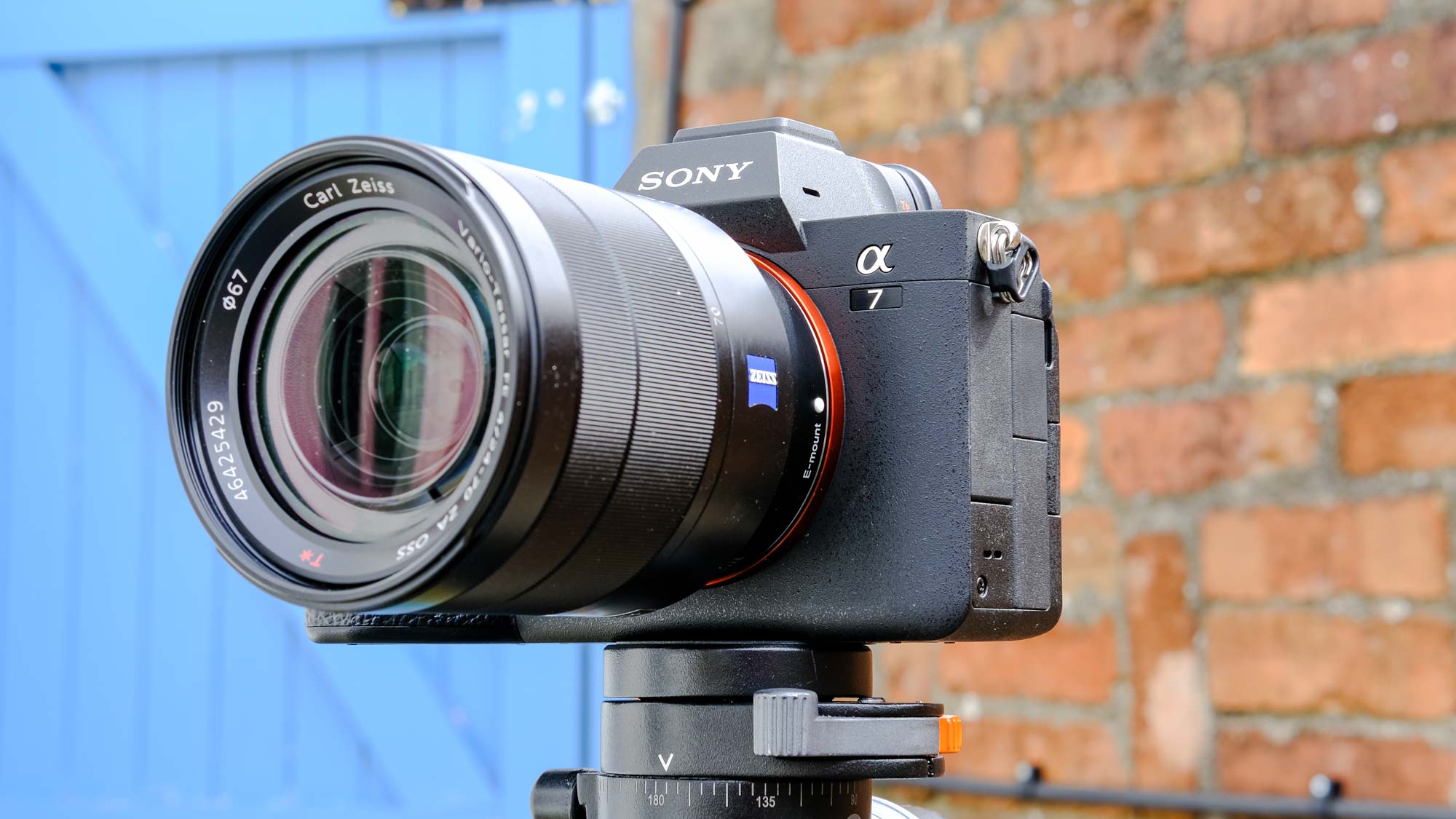
Sensor: 33MP 35 mm full-frame Exmor R CMOS
Image processor: Bionz XR
Image stabilization: 5-axis in-body image stabilization, up to 5.5 stops
Autofocus: 759-point Hybrid AF
Viewfinder: 0.5-inch OLED EVF, 3.69 million dots
Display: 3.0-inch fully articulated LCD Touch Screen, 1.3 million dots
ISO: 100-51200 (expandable to 50-204,800)
Max video resolution: 4K/60p (cropped)
Ports: USB type-C, HDMI Type-A, Micro-USB, 3.5mm headphone jack, 3.5 microphone jack, Multi-interface shoe
Storage: 1 x CFexpress Type A/UHS-II, 1 x UHS-II SD
Wireless: Wi-Fi 5/2.4GHz, Bluetooth 5.0
Shutter speed: 1/8000 sec mechanical; 1/8000 sec electronic
Shooting speed: 10 fps mechanical; 10 fps electronic
Battery life (CIPA): 580 shots
Size/weight (body inc battery, card): 5.16 x 3.78 x 3.15 inches; 1.45 lbs
The Sony A7 IV is one of the best hybrid cameras you can buy now. It excels in both still photography and video, making it an ideal choice for creatives who want one camera that can do it all.
While this camera looks very similar in design to its predecessor, the Sony A7 III, upgrades to both design and performance put the fourth generation of A7 into a class of its own, making it one of the best mirrorless cameras currently on the market.
The 33 MP full-frame sensor and BIONZ XR processor offer an excellent dynamic range and superb low-light performance, making it the ideal camera for portrait and landscape photographers. while its compact size and lightweight design also makes it a great choice for travel and street photographers who need high-quality in a small package.
Vloggers who want to create high-quality video content will also be convinced to put aside even the best camera phones in exchange for the Sony A7 IV, which has seen a huge improvement in video capabilities, such as being able to record 4K video at up to 60fps and more pro-focussed features including S-Log3, HLG, and 10-bit color.
From design to performance, as well as highlighting the pro’s and con’s of this camera, we will share everything you need to know about this camera in our Sony A7 IV review.
Sony A7 IV review: Price and availability
The Sony A7 IV isn’t a budget camera, so you’re looking at a starting price of $2,499/£2,399 for the body-only package, putting this camera right at the top of the Tom’s Guide price range, alongside other professional hybrid cameras like the Canon EOS R6 Mark II — this camera’s nearest rival.
While many users of this camera will be upgrading from another Sony body, and may therefore have lenses already, there are a couple of different kit options for newcomers to the lineup. For a little more, you can opt for the FE 28-70mm F3.5-5.6 OSS Lens, which will set you back $2,699/£2,599. As a standard(ish) zoom, this lens is a good all-rounder that works well for both landscape and portrait photography. It features optical stabilization, although its use for creative purposes will be hampered by its relatively narrow F3.5-5.6 variable maximum aperture.There’s also the FE 24-105 G F4 lens for $3,696/£3,600, which provides a super versatile 24-105mm zoom range, optical image stabilization (OSS) and a constant F4 maximum aperture in a relatively light package.
I tested this camera with the Sony FE 24-70mm f4 ZA OSS Vario-Tessar Carl Zeiss T Lens, which is ideal for portraits and landscapes. This lens doesn’t come as a kit option and will set you back $899/£749, so it isn’t cheap, but it delivers incredibly sharp images across the entire focal range, from wide-angle to telephoto. It also produces beautiful bokeh, which is perfect for portrait photography. The autofocus on this lens is fast and accurate so ideal for when you’re shooting fast-moving subjects.
The Sony A7 IV is only slightly cheaper (in the U.S.) than the EOS R6 Mark II, which will set you back $2,499/£2,779 for body-only and only boasts 24.2MP compared to Sony’s 33MP. A benefit of Sony’s full-frame E-mount over the Canon RF-mount, though, is the size of the lens lineup — Canon’s RF lens system is growing, but still not as wide as Sony’s. What’s more, the E-mount has also been opened up to third-party manufacturers, so you’ll also be able to choose high quality lenses from the likes of Sigma, Tamron and Viltrox.
If you want a 35mm full-frame camera, but your budget doesn’t quite stretch to the A7 IV, then it is worth taking a look at the Sony A7 III. It has a respectable 25MP sensor and can capture HDR 4K video while being quite a lot cheaper. You can buy a Sony A7 III for just $1,999/£1,699 for the body only or $2,199/£1,899 for a body and 28-70mm zoom lens.
Sony A7 IV review: Design
The Sony A7 IV doesn’t stray too far from Sony’s design ethos. In fact, it looks so much like its predecessor you’d probably not notice much of a difference if you had them side by side. But there are a few subtle changes that are more than superficial and help make this camera better to use.
The A7 IV sees a larger and deeper grip than previous models, which makes the camera easy to hold and use regardless of the position you’re in. I found it particularly satisfying to handle when shooting at low angles as I didn’t have to get right onto the ground to be able to obtain the perfect shot. One thing that’s really impressive about the body is that despite the larger grip, it hasn’t lost its compact stature — it fitted neatly in my hands.
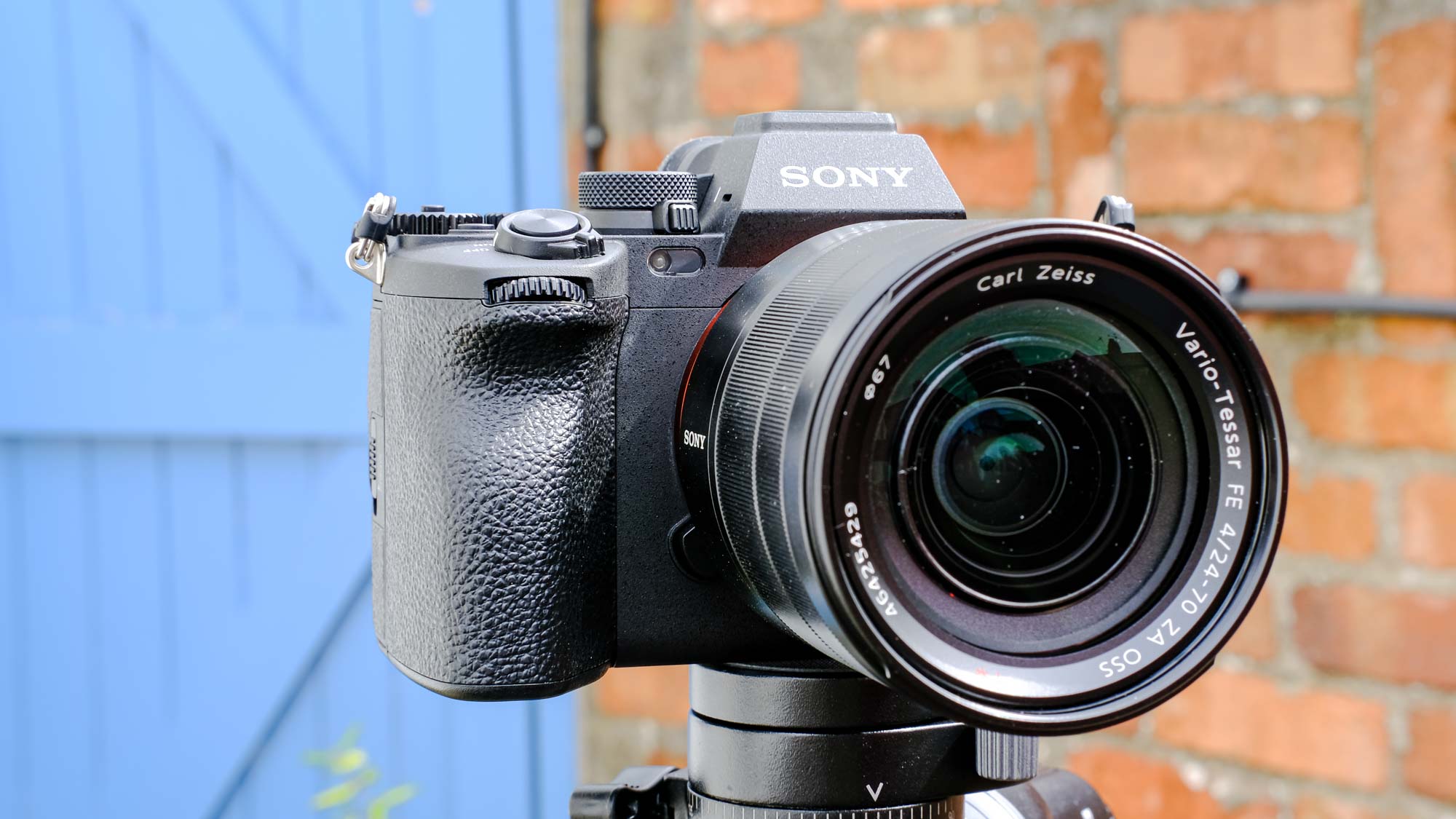
This really feels like an expensive camera — which, of course, it is — as unlike rivals including Fujifilm and Canon, Sony hasn’t gone down the line of heavily incorporating plastic into the design of its bodies. Instead, Sony has employed magnesium alloy almost throughout, resulting in a substantial and solid feel. Although weighing in at 1.5lbs, the A7 IV doesn’t actually feel that heavy in use, and is light enough to carry around all day without feeling weighed down.
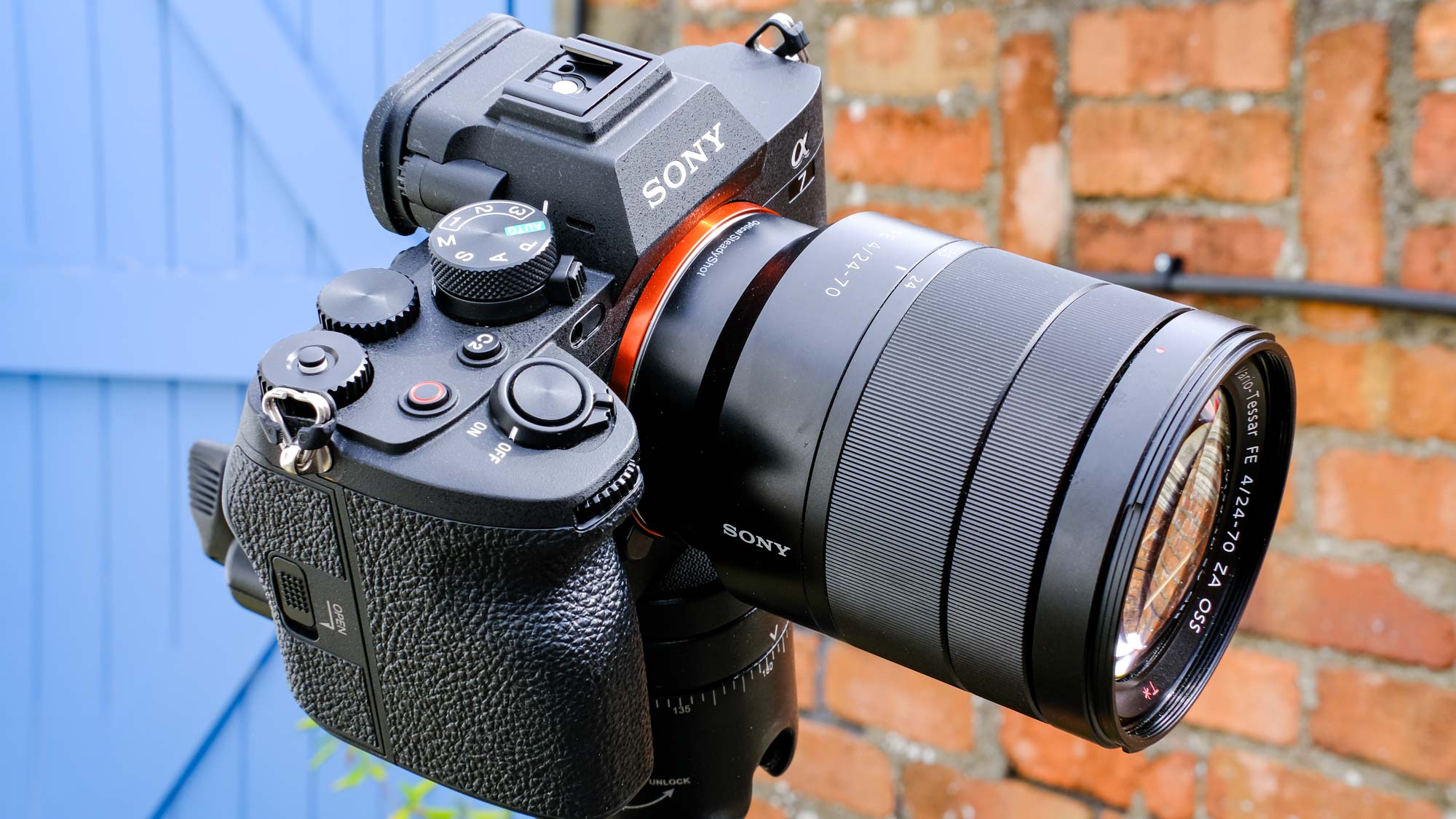
The 3-inch, fully-articulating touchscreen display is one of the biggest upgrades this camera has over its predecessor, the A7 III. The screen resolution has been updated from 922k-dot to 1.03m-dot and it’s much sharper and brighter. This made composing images using the screen and reviewing them afterwards a lot easier. This is a fully articulated screen so can flip out and rotate a full 180 degrees — a huge plus point for anyone vlogging to camera, as well as for low-down and odd-angle shots.
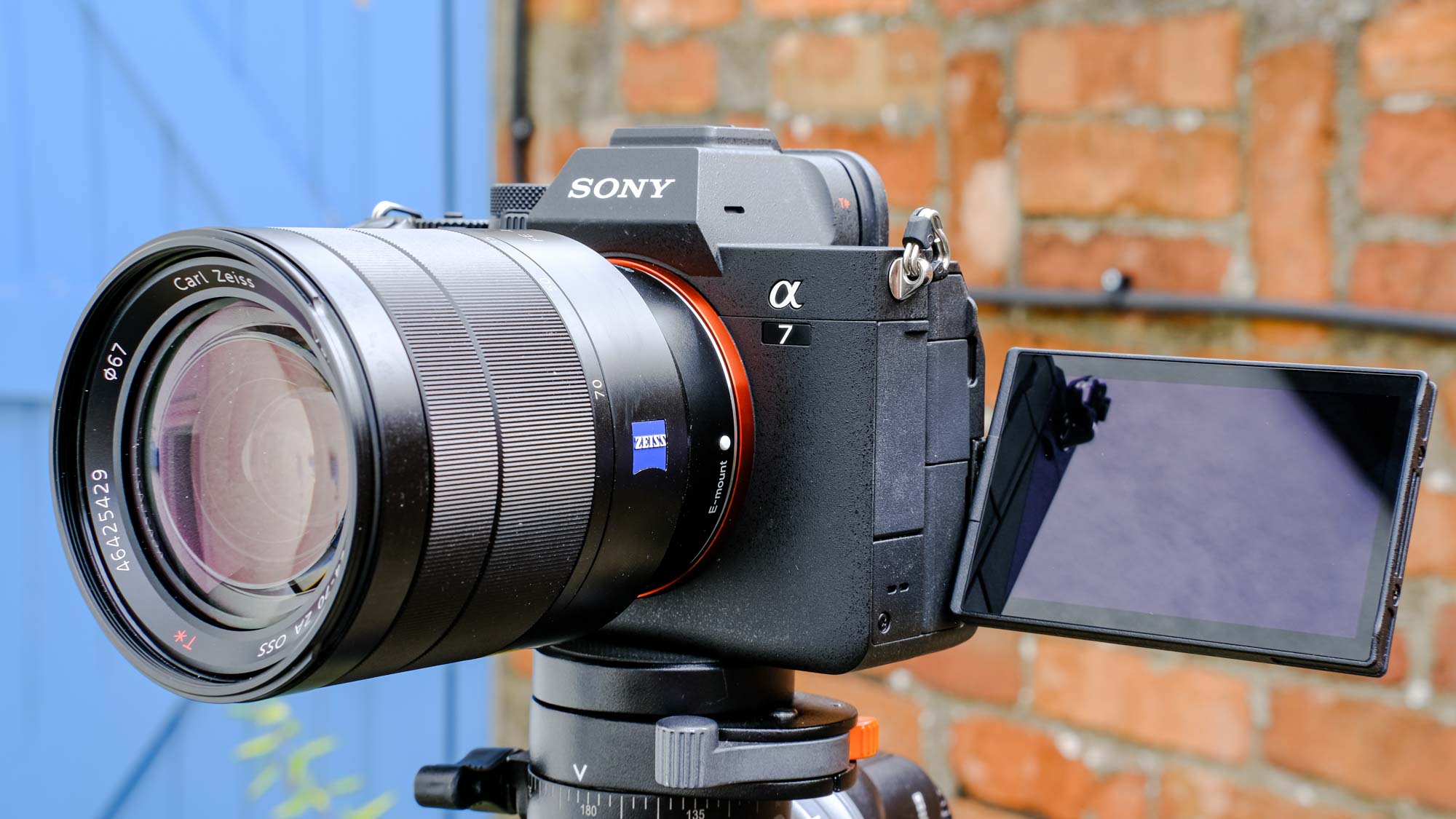
Another major improvement over the A7 III is the electronic viewfinder (EVF) which has a 3.69-million dot resolution and a 120fps refresh rate, allowing a better view of fine details as well as staying smooth when panning to track moving subjects. I also found the EVF to be bright and clear while providing an immersive shooting experience. One of my favorite tools was the virtual horizon (or virtual level). It works by displaying a small level indicator in the EVF, which shows you whether your camera is tilted up, down, or to the side. If you’re level then it’s highlighted in green, if you’re not, then it’ll show as red. You can also see how many degrees you need to move to get it straight. I found it great when taking architectural shots but even better when photographing the horizon, where anything but a perfectly level shot is extremely noticeable. It’ll also save you wasting a ton of time straightening images in the best photo editing software.
This camera comes with a Multi-Interface hotshoe meaning you can plug in various accessories, such as an external microphone, without needing any extra cables or power source, a total game changer for professionals hooking up lots of accessories, or for anyone taking their camera on the road with them.
The Sony A7 IV has two card slots: a CFexpress Type A slot which will give you write speeds of up to 700MB/s and a standard SD/SDHC/SDXC slot supporting the latest UHS-II standard. This is a boon for anyone doing professional work as CFExpress Type A can keep up with the high volumes of data involved when shooting hi-res video or images using fast burst mode. Just keep in mind that CFexpress cards can set you back a pretty penny, with an 80GB card costing around $218/£169 and a 160GB card coming in at $514/£399. They’re also more difficult to come across. If you aren’t shooting high res video, the CFExpress slot will also fit a UHS-II SD.
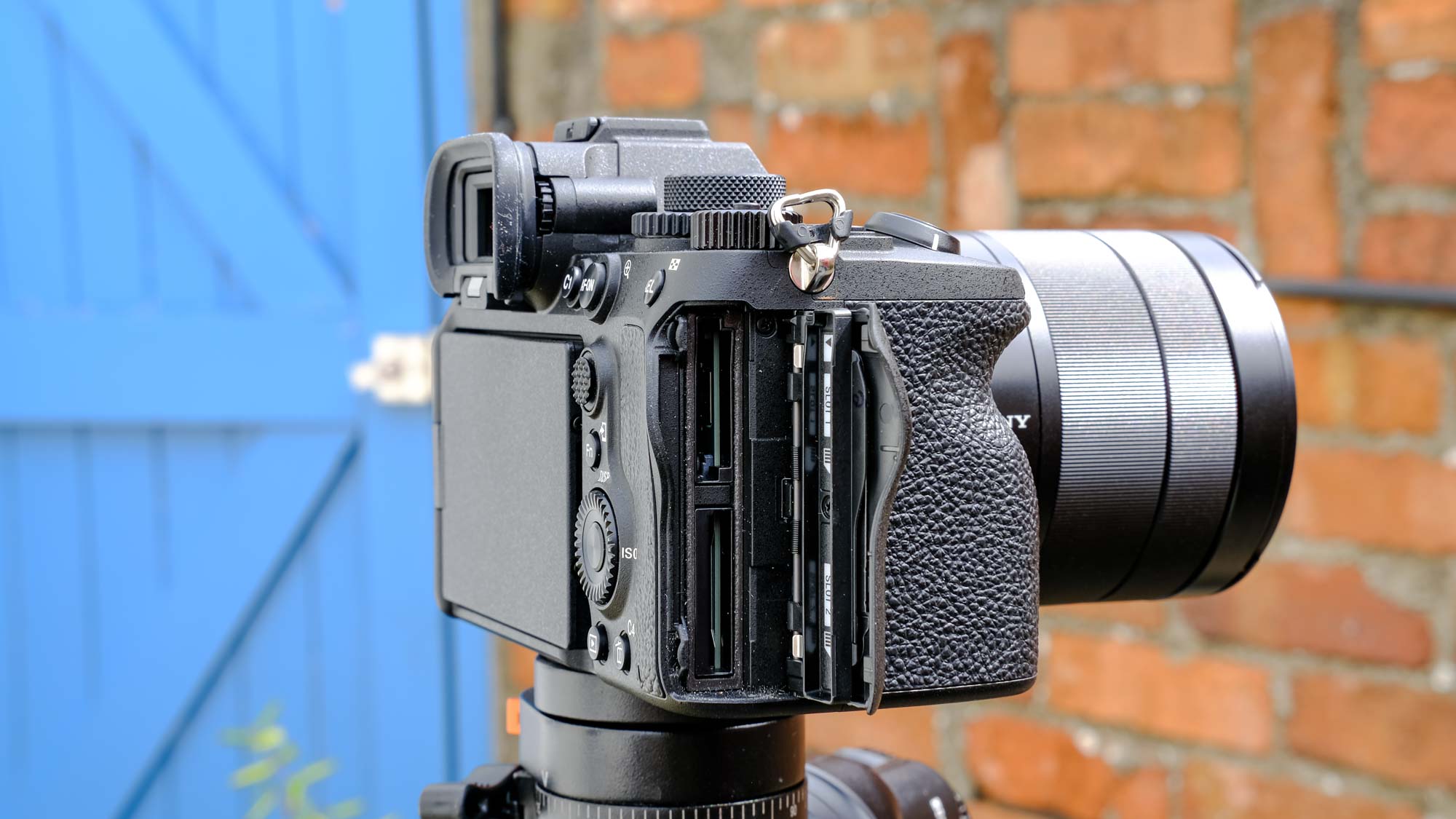
While pretty standard on modern cameras, this model has a USB-C port for charging or hooking up peripherals, plus micro USB port for extra connectivity options. It also features a full HDMI port for hooking up to external monitors.
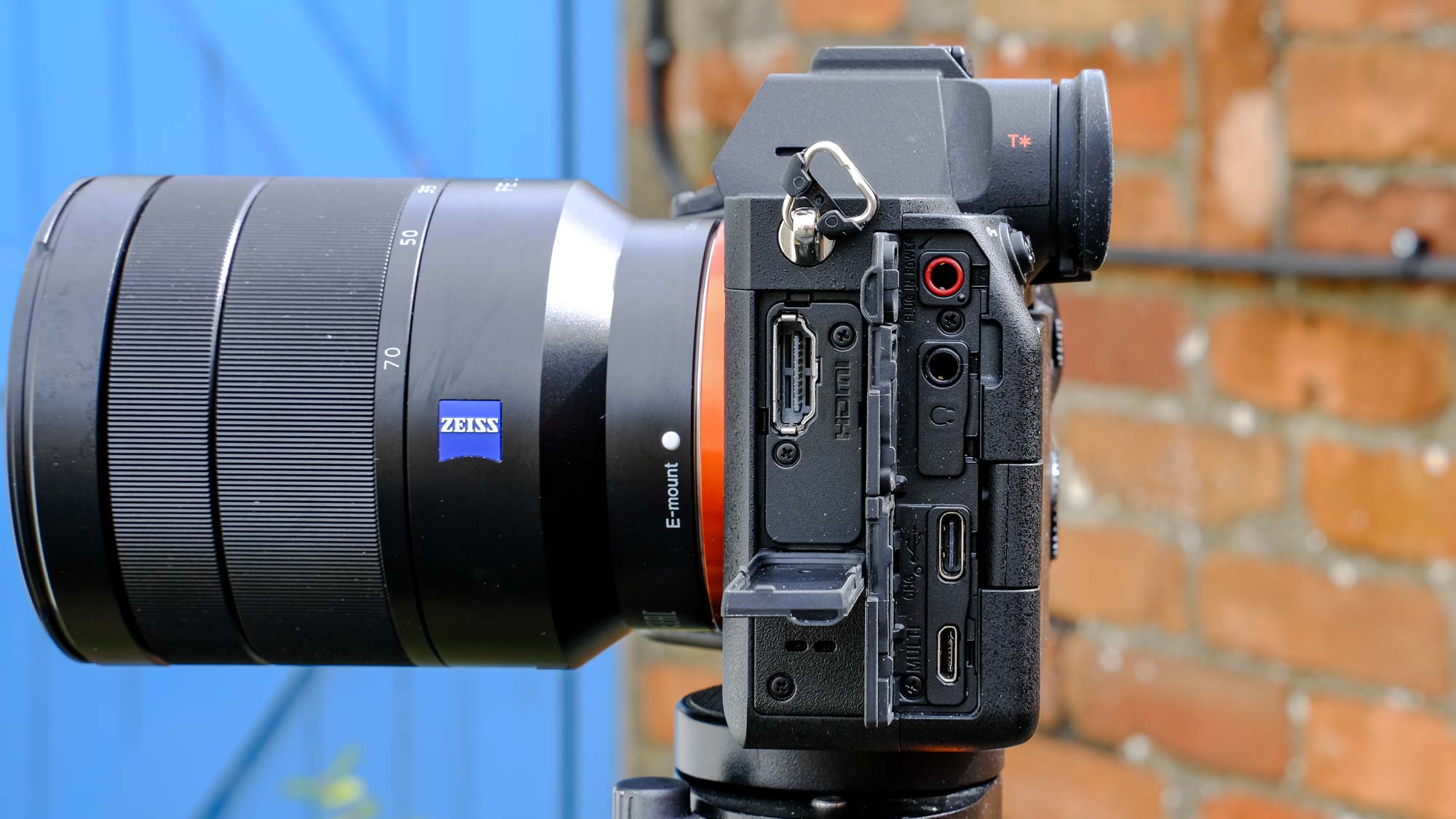
One super cool feature that is worth mentioning is that the Sony A7 IV closes its mechanical shutter when the camera is turned off. This means when you’re changing your lens it’s protected from dust and dirt entering. It’s an invaluable feature for travel and street photographers who are often in windy and dusty situations.
Sony A7 IV review: Controls
The Sony A7 IV features a lot of dials and controls, but everything is intuitively placed and easy to use. All the dials and buttons at the top of the camera are neatly housed on the right-hand side, so if you need to change anything while you’re shooting, you can do so quickly and still maintain a good grip on the camera.
The camera has four main command dials which are situated on top of the body, priving lots of direct control.The dials are all well spaced out, which makes it easy to adjust and switch during use, allowing for fast-paced shooting. All the wheels have a really good resistance to them, which stops any accidental changes.
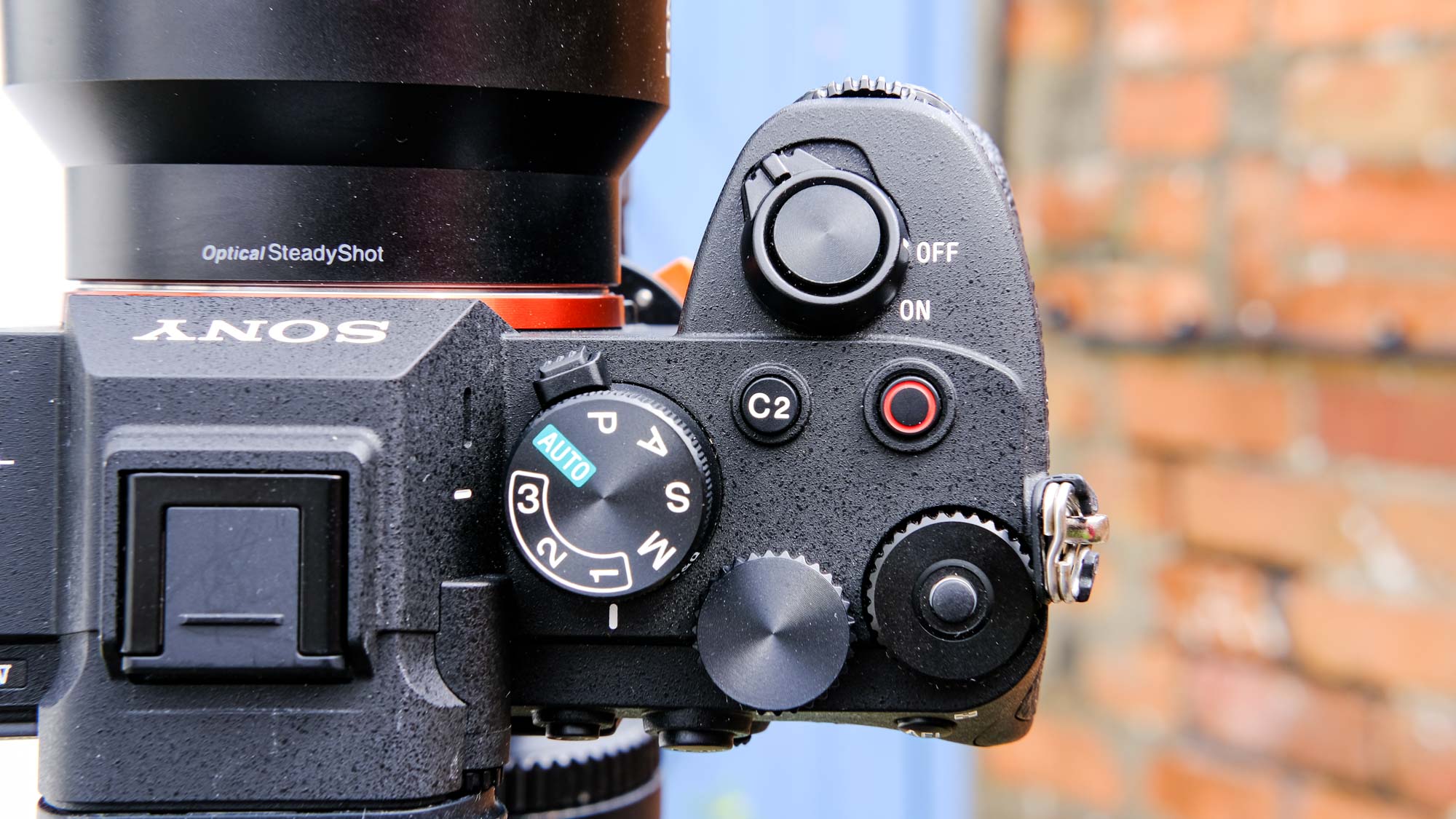
The largest of the dials is the mode dial which sits next to the viewfinder. Even if you don’t have big hands, you’ll be able to toggle this control effortlessly from auto to a custom shooting mode with your index finger while holding the camera.
Just below the mode dial is a separate switch to go between stills, movies, and ’S&Q’ mode (which is when you want to record slow-mo or timelapse footage). You do need to press in a small button to be able to change that, but it’s a great button for travel photographers who may need to switch from stills to video quickly.
The top of the camera also features the shutter release button, which offers good feedback — although the half-press does feel shallow, so it can take a bit of time to get used to the feel if you’re used to something a little more solid. The record button has also been placed on the top of the camera, which makes it easier to start and end recordings without losing any grip if you’re operating it in handheld mode.
Elsewhere on the camera, there are four different custom buttons, the C2 button sits on top next to the record button, but all the others can be found on the back. It’s simple to set up these custom functions via the settings menu. It’s also worth noting that the custom shooting functions can be selected for either stills, video or S&Q meaning you can have three separate custom function layouts, one for each mode.
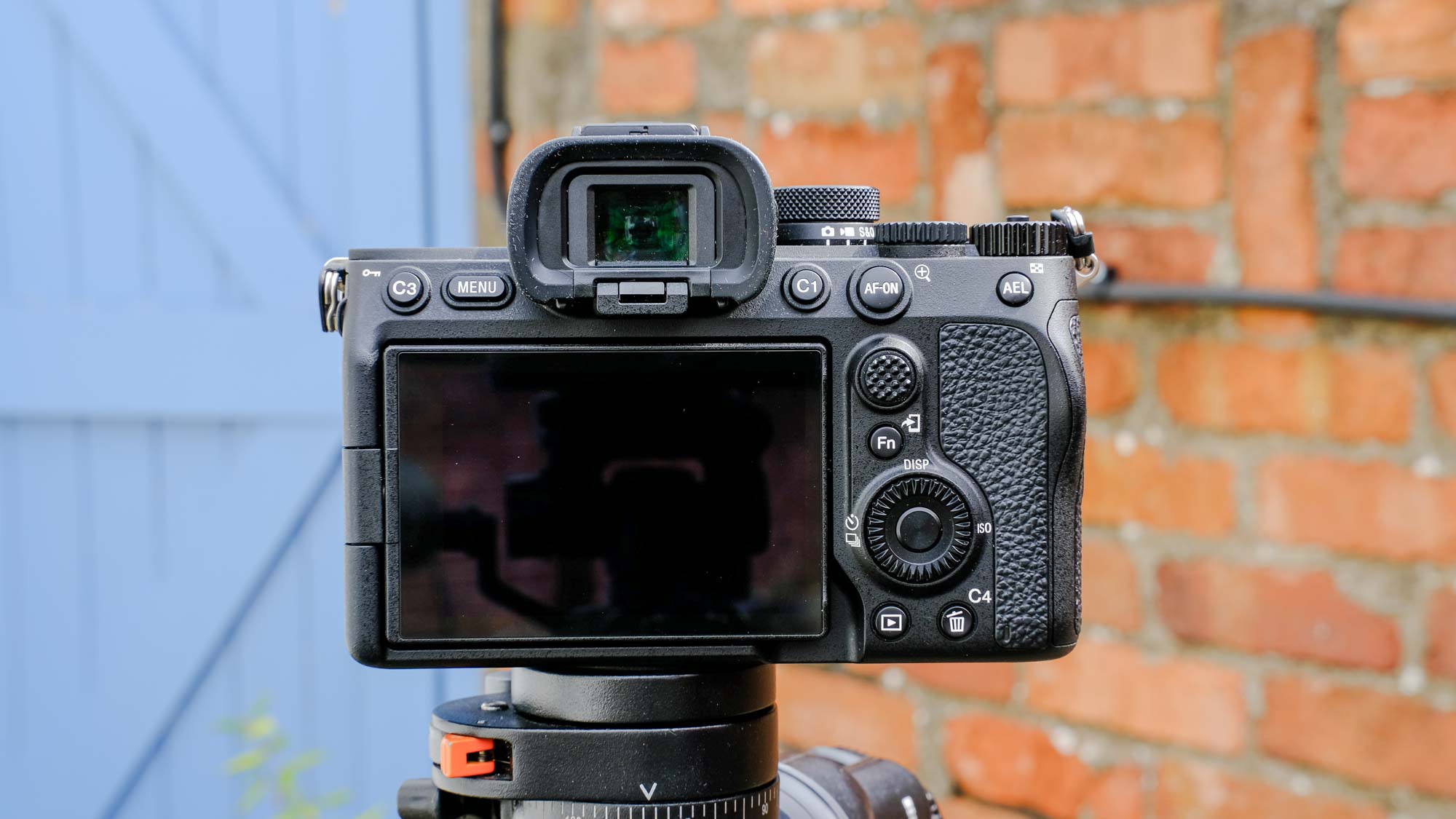
There’s also a rear joystick which is highly responsive and much easier to control than the one on the Sony A7 III because it’s softer and more comfortable to move around which made whizzing through menus and settings at pace an easy task. Its placement makes it easy to reach with your thumb when shooting using the viewfinder.
The menu button is neatly tucked away on the left-hand side. Just one click of this and you’re taken to the main menu, which can be scrolled through by using the wheel on the right-hand side of the body or by using the touchscreen interface — having both is useful for navigating at speed. There are a lot of sub-menus, which like any new menu system can be a little confusing when you first pick up the camera. But the layout is very simple and well thought out to make navigating through them at speed a breeze.
Sony A7 IV review: Image Performance
The Sony A7 IV is a high performance camera. It uses a backside-illuminated 33-megapixel CMOS sensor which produces sharp, detailed images even in low light. In the images below, you can see the finest of details on the purple flower petals, as well as the texture of the tomato skin. 33MP is enough for most photographic uses, although if you’re likely to be printing at large sizes, you may be better opting for a 40-60MP camera such as the Fujifilm X-T5 or the much more expensive Sony A7R V and Canon EOS R5.
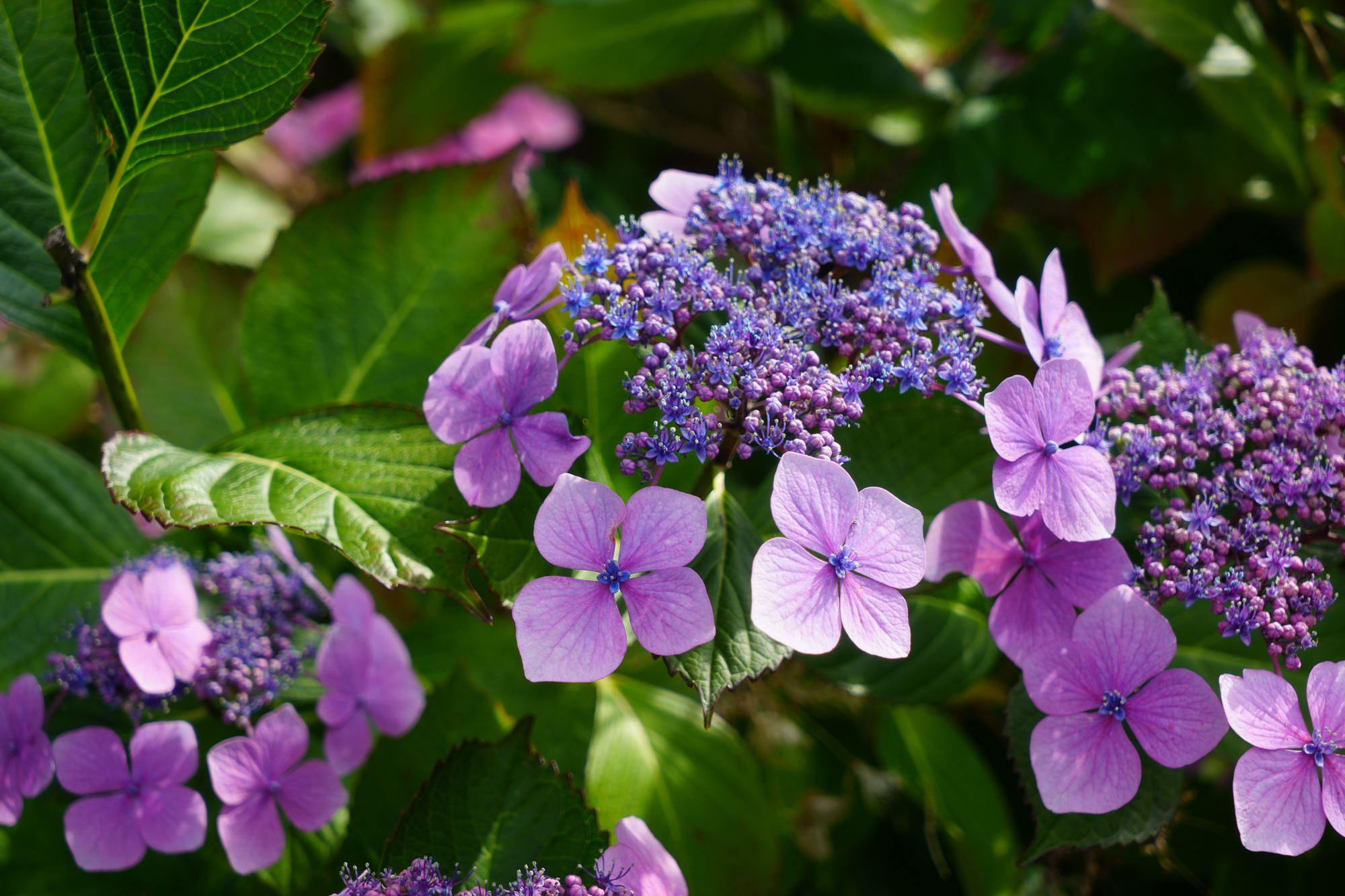

This camera uses the latest BIONZ XR processor, which is speedier than previous generations, processing images at a faster rate. It also processes images in 16-bit which provides fantastic color rendition with true-to-life colors straight out of the camera. In this photo of a tudor cottage, the Sony A7 IV has captured the pink paint in a natural manner, without making it seem overly vibrant, saturated or artificial.
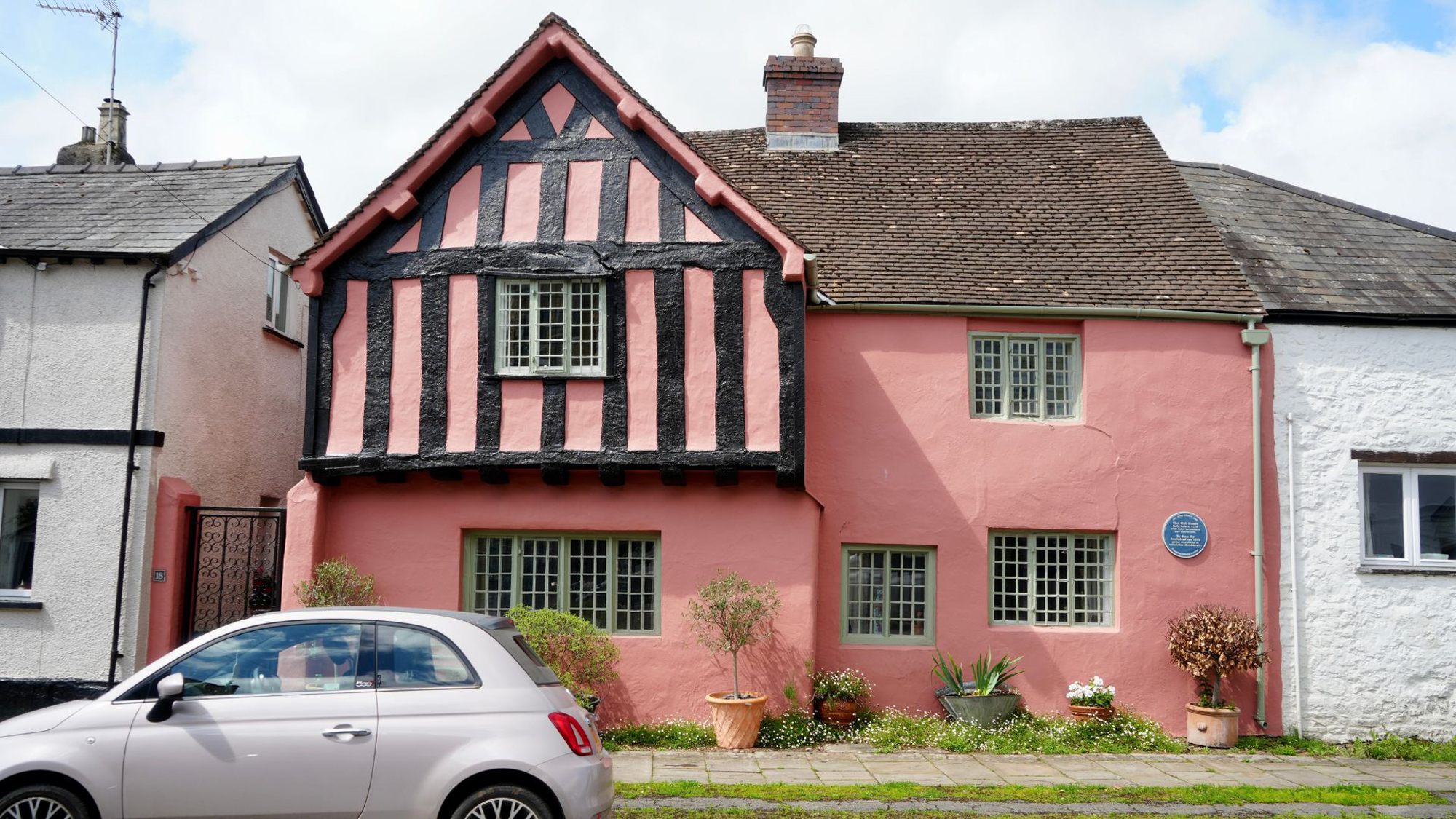
The A7 IV has an in-body image stabilization (IBIS) system providing up to 5.5 stops of stabilization. Handheld results were sharp and clear down to shutter speeds of 1/20 before images started to display motion blur. This is a great feature for video, allowing steady, professional looking footage, and for any photographers shooting handheld in low light.
The Sony A7 IV autofocus is highly impressive in its performance. It uses real-time tracking, which allows you to tap on the screen and select your subject before half-pressing down on the shutter to lock on. This means wherever your subject moves in the frame, it’ll stay in perfect focus. I found this not only to be super smart but also really fast and responsive. It also worked brilliantly when shooting video. The photo below was taken using the A7 IV’s bird detection and tracking, which locked onto the duck and tracked it through the frame.
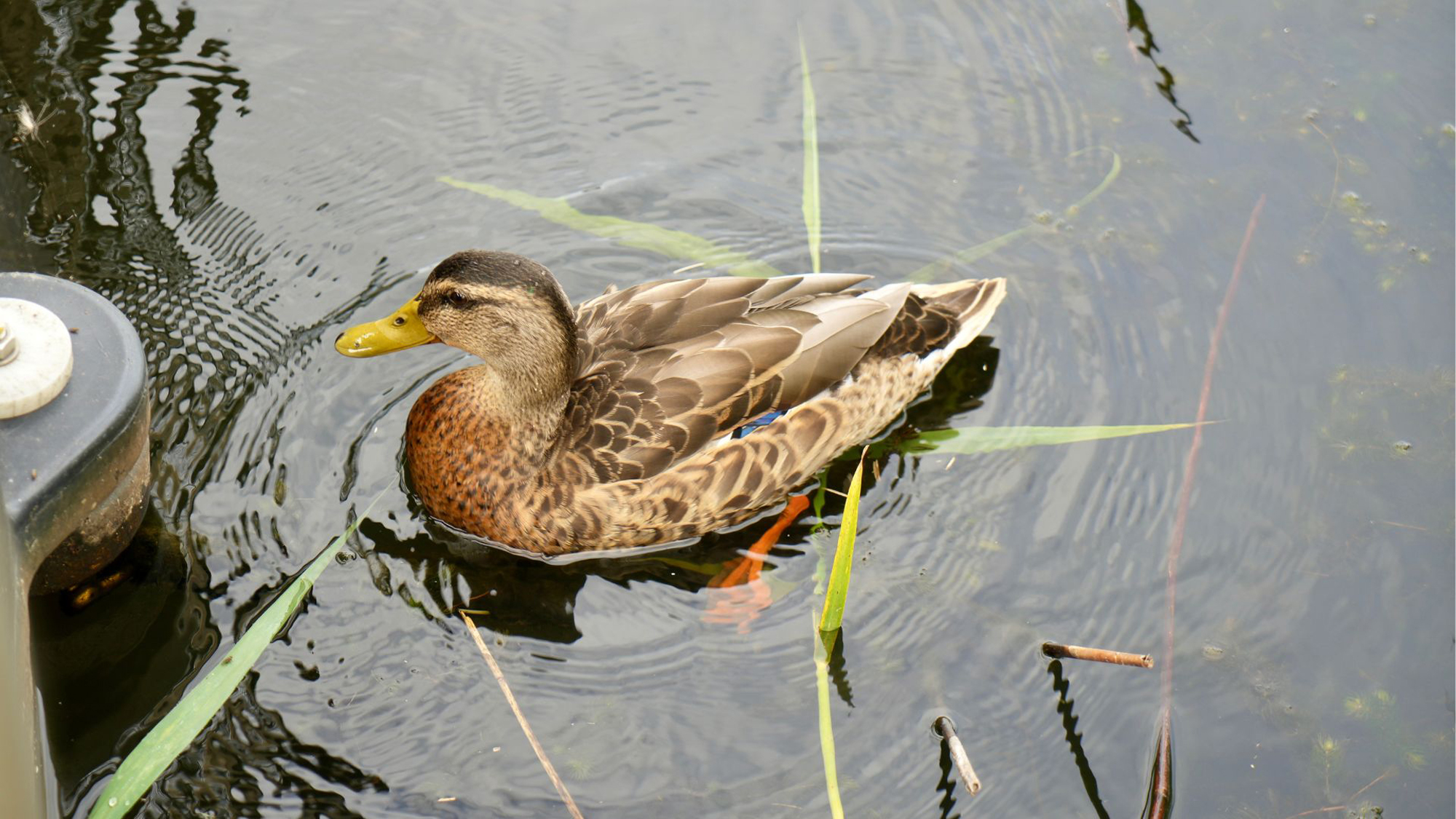
There are a lot of options when it comes to focus modes, including the bird detection and tracking used above, as well as modes for human faces and eyes, and animals. I tested the autofocus out at the nature reserve, taking images of the ducks and taking shots of my dogs, who move around a lot. The image below demonstrates that the A7 IV did a great job detecting and tracking my dogs, providing shots where their faces and eyes were sharply in focus. In this shot, the dog’s face, eyes and chest are all in sharp focus.
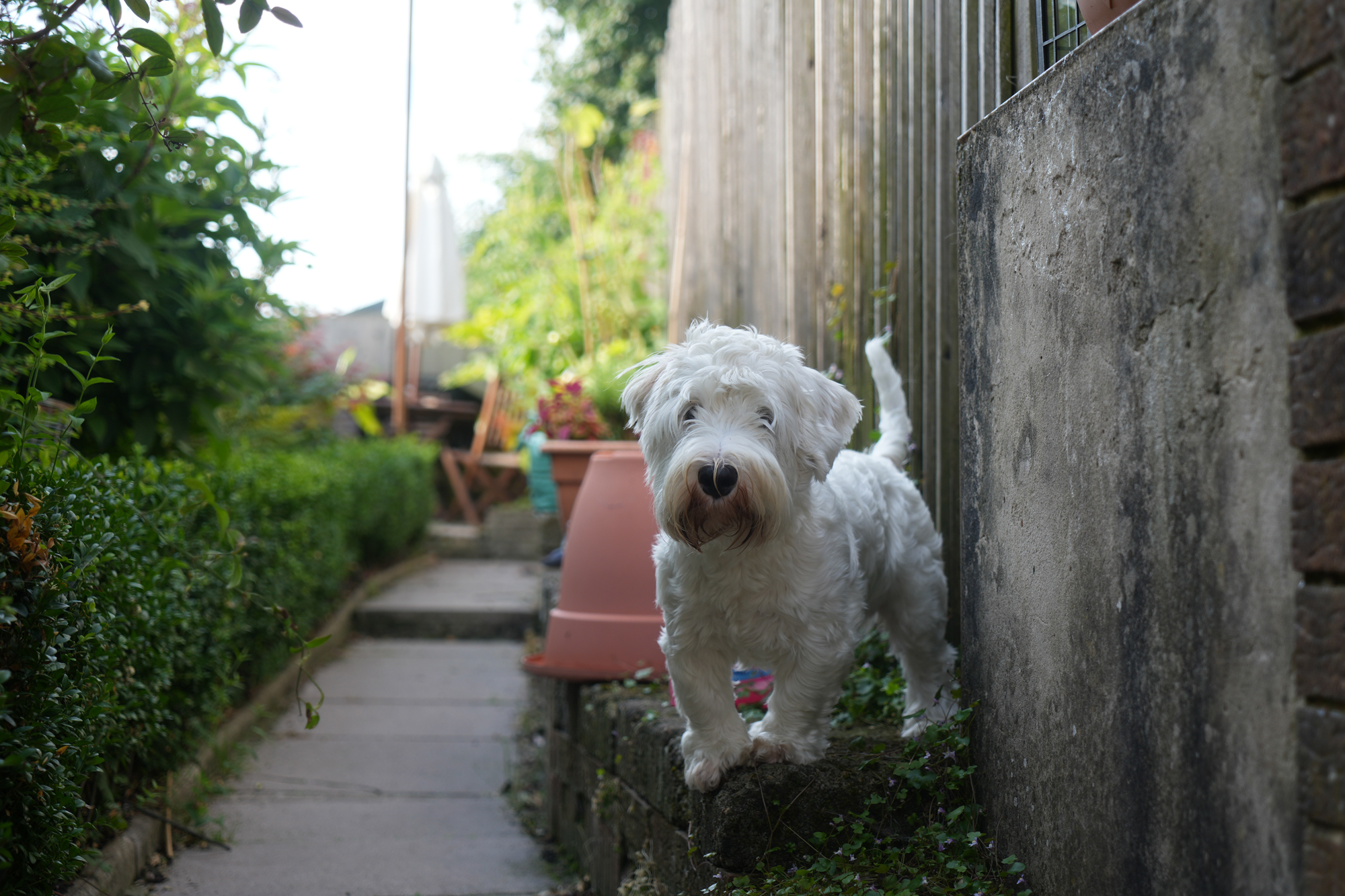
The standard ISO range is ISO 100-51,200 for stills, expandable to 50-204,800. Thanks to its large sensor, performance at medium-to-high ISO is fairly decent, although the higher megapixel count versus previous 24.2MP sensor in the A7 III will result in noisier images when the ISO is boosted — this is due to a greater number of light sensitive photosites (essentially the analog photon collectors on the sensor itself which are converted into digital pixels) on the higher resolution sensor.
As you can see from the imagery below, at ISO 100, results are super clean and highly detailed. The texture and brush strokes of the gold paint are visible, while the brass greyhound has a metallic shine. By ISO 6,400, visual noise is just starting to creep in on the gray wall behind, but detail is only moderately impacted by noise reduction smoothing — the gold paint texture is still visible, and the dog has only slightly lost its metallic luster.
By ISO 12,800, most of the detail present at ISO 6,400 is still there in the better exposed parts of the shot, which is quite impressive — the paint hasn’t lost much more detail, and the greyhound has only lost a little more shine. There is greater noise now visible on the rear gray wall and the Buddha’s face is looking rather soft. At ISO 25,600, noticeable detail has been lost on the gold paint, the Buddha’s face and the dog, with significant noise on the gray wall. However, the shot would still be usable in an emergency, as neither noise nor smoothing are completely destructive.
By ISO 51,200, noise is highly destructive, with the smooth gray rear wall now resembling pumice. Both the Buddha statue and the dog are looking incredibly soft thanks to noise suppression smoothing out details. This shot looks pretty terrible, and would only be usable in a case of last resort.
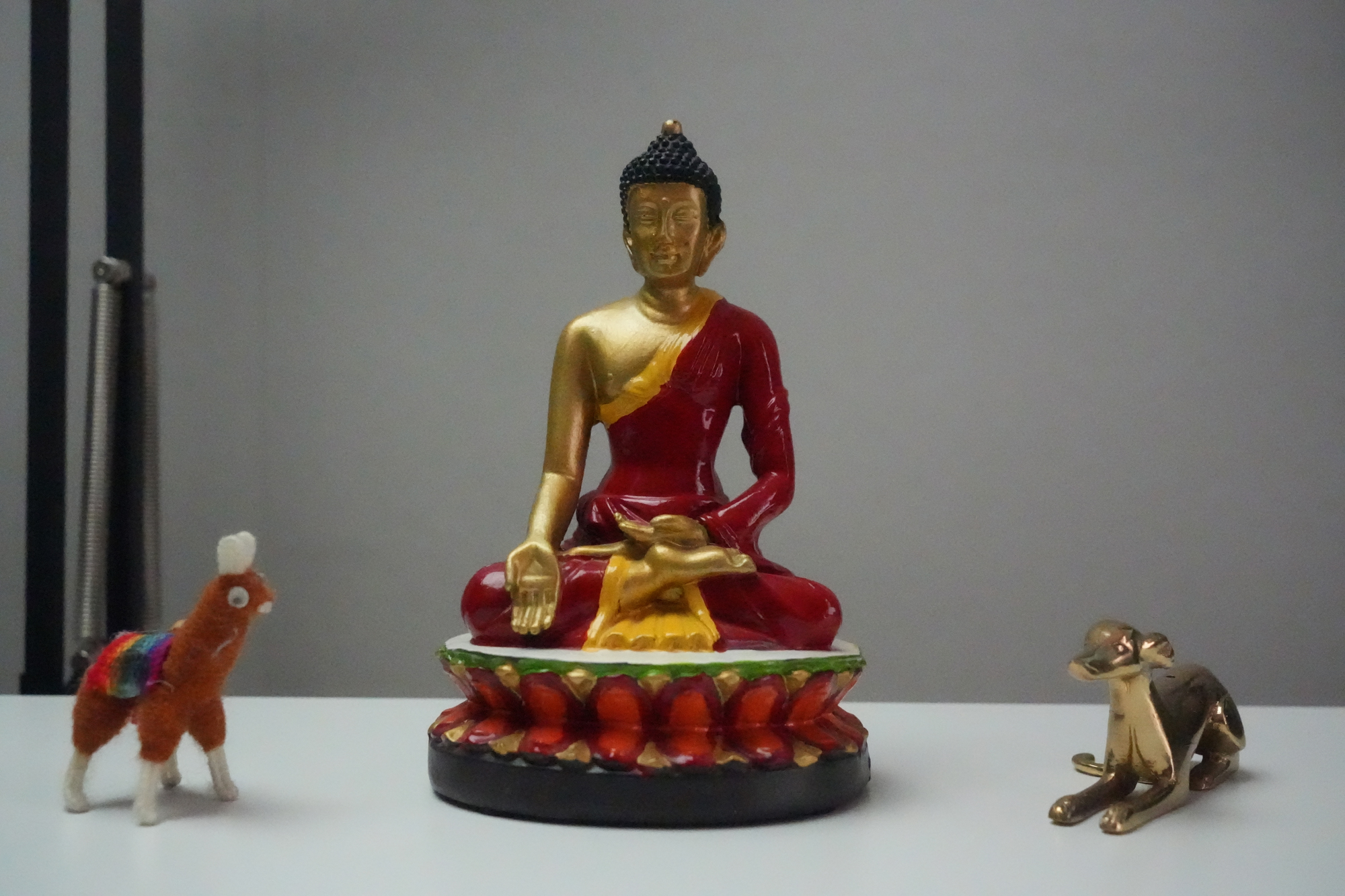
Left in default pattern metering mode, with dynamic range adjustments off, the Sony A7 IV performed well in high dynamic range scenarios, as you can see in the image below, shot on a bright day. The camera has retained detail in the bright clouds on the top left with no blown out highlights. Meanwhile, there are deep shadows in the rear ground trees on the left.
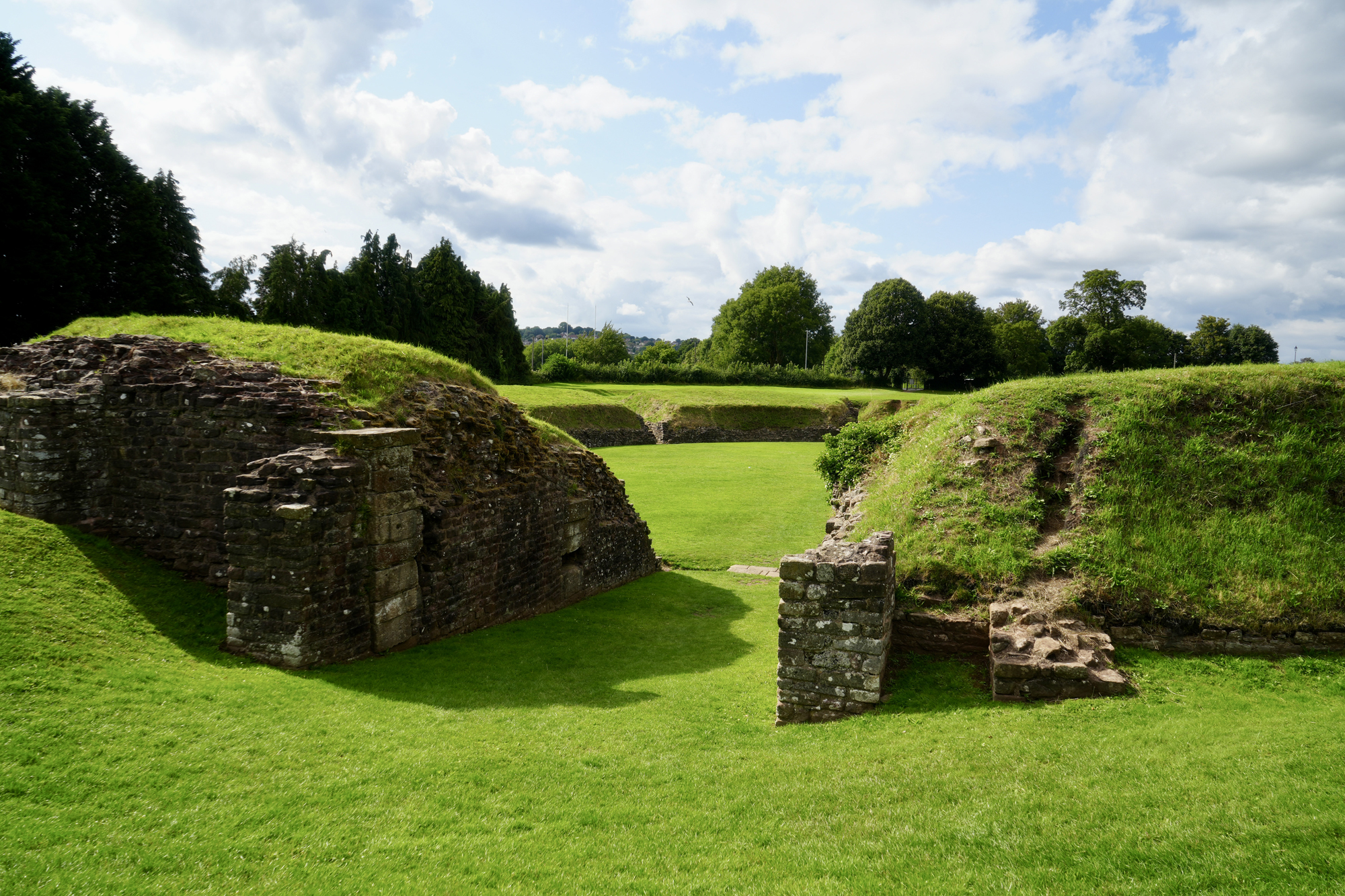
The burst shooting isn’t as good as some rivals, managing a max of 10fps. But the buffer rate is decent, handling up to 828 RAW pictures or unlimited JPEG in high speed drive. That’s a lot of continuous shooting, which would be suitable for wildlife photography, although probably not high octane sports.
Sony A7 IV review: Video performance
The Sony A7 IV is a hybrid camera that really excels in video as well as it does stills. There is no limit on recording time with this camera, and it can easily record an hour of continuous 4K at 60p video without overheating. Although, if you’re recording 4K at 60p capture, you will have to switch to Super35 cropping mode. The 4K resolution looks really sharp, and can be shot in 10-bit 4:2:2 for a generous color gamut. You can also shoot in SLog, for more flexibility when color grading in post.
One huge plus point is that there is also the ability to shoot vertical video, ideal if you’re creating content for Instagram reels, YouTube shorts or TikTok.
There are a ton of different video settings on offer with the A7 IV. There are two video codecs, the XAVC HS, which retains more detail at smaller bitrates and XAVC S-I, which offers more consistent performance. It also benefits from shockless white balance, which smooths out the transition between the different white balance settings. This is really useful when shooting in a situation where the lighting changes quickly (for example, a regular summer's day in Britain) or when shooting in a mixed lighting environment such as a concert. When you switch this function on in the menu, there are fast and slow settings which you can opt for depending on the type of lighting that you’re dealing with.
There is also a flexible exposure mode which will help you to fine tune the exposure of your footage but this also works on stills too. It’s a brilliant function for when you’re shooting backlit subjects. It works by letting you change the aperture, shutter speed and ISO all at once — usually when you’re using the PASM modes you can only change one setting at a time.
The autofocus function also works well with video: it’s reliable and fast, making it perfect for vloggers who don’t have time to fiddle with manual focus while making their videos.
Off-speed recording is also a really useful function. It allows you to record video at frame rates not available in regular movie mode. This is really useful if you like to create a lot of slow-motion or time-lapse content. It can be accessed by selecting the S&Q mode, you then can use the quick menu to select the frame rate that you want to use. It’s important to note that these frame rates depend on the resolution that you’re filming in. So for example, if you’re recording in Full HD you have the option to choose frame rates of 1-20fps. If you’re recording in 4K then the frame rate options are 1-60fps. The camera will also adjust the shutter speed to maintain a constant exposure when you’re recording in off-speed mode so you will need to adjust the aperture or ISO to compensate. It’s also a good idea to use a memory card with a high write speed if you’re going to use this mode so that the camera doesn’t drop any frames.
Sony A7 IV review: Battery life
The Sony A7 IV uses an NP-FZ100 battery, which is rated to last around 580 shots on a full charge, or about two hours of 4K video. This is the same battery as used in the Sony A7 III, but that’s not a bad thing. The first two A7 models used the Sony NP-FW50 battery, which was relatively poor and wouldn’t last a whole day of photography — this was a major complaint from enthusiast and professional users alike, which Sony listened to, introducing the NP-FZ100 for the A7 III. As such, if you’re a photographer, even under serious usage you can expect the A7 IV’s battery to last you an extended shoot.
Obviously though, for video or professional work, you’ll want backup batteries, just in case, but reliable, affordable high performance options are readily available on Amazon, often bundled with charging docks that will also charge the original Sony battery.
Sony A7 IV review: Verdict
The Sony A7 IV may not be the most powerful mirrorless hybrid camera you can buy right now, but it’s certainly one of the best. It’s a competent all-rounder that produces both high quality stills and video, with a ferocious autofocusing system, exceptional viewfinder and premium build quality. There are also a range of features that will appeal to those looking to step up from enthusiast into the semi-pro or even professional realm: a CF Express port, a wide range of dials and controls, 4:2:2 color and SLog recording will all solve particular headaches for serious filmmakers in particular. And with a large choice of lenses available from both Sony and third party manufacturers, you’ll have plenty of options for getting creative with glass.
It’s also a good choice if you’re looking to make that leap from DSLR to mirrorless, or if this is your first proper camera. The initial outlay may be high, but it’s an investment — this isn’t a camera that’s going to need to be changed next year or the year after.
The A7 IV isn’t the best option if you’re into shooting high-action photography like sports, as while the auto-focus is superb, the high speed shooting is lacking. Likewise, if you’re looking for a body to undertake professional video work, the cropped 4K/60p may be an issue, limiting this camera to a b-cam.
As such, it loses out to the similarly priced Canon EOS R6 Mark II, which offers uncropped 4K/60p, much faster drive rates (a whopping 40fps), and outstanding autofocus performance (it’ll even track vehicles, trains and planes). As long as you can live without a CF Express port and a much slimmer (although still adequate) selection of lenses, the Canon just about pips the Sony.
However, if you can’t live without those things, or you’re already using an FE Mount A7 camera like the A7 II, the Sony A7 IV is a great upgrade, which will handle most things the modern enthusiast or semi-pro hybrid shooter can throw at it.







